Why did rust appear on the leaves and what to do?
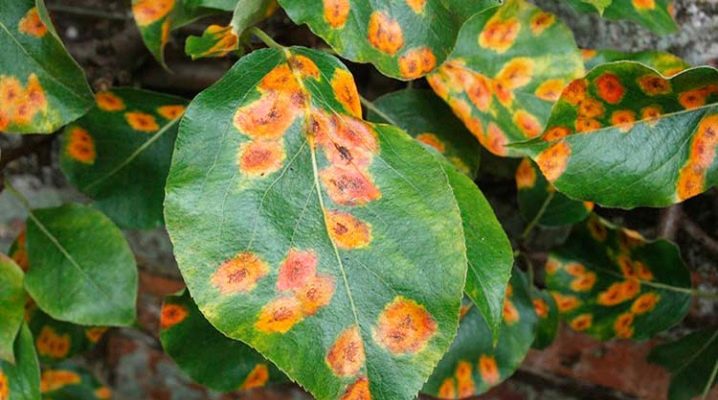
Rust is a common fungal disease that affects both wild and domestic plants. If measures are not taken in time to combat this disease, it can completely destroy the crop.
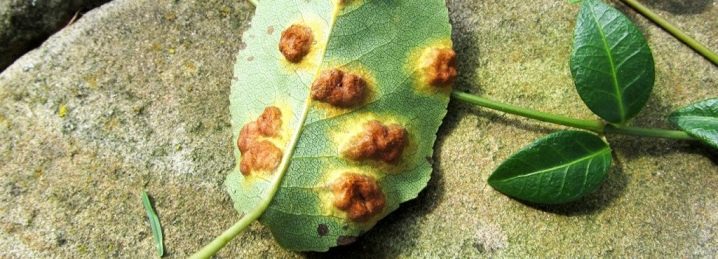
Views
There are several varieties of this disease that affect different cultures.
- Cucumbers. These plants get sick in conditions of high humidity and low temperatures. Both greenhouse cucumbers and those that grow in open ground can suffer. The foliage and stems of diseased plants are covered with brown spots. The higher the humidity indoors or outdoors, the faster the disease develops. If you do not get rid of the infected parts of the bush in time, the consequences can be very sad. Plants die from this disease in a fairly short time.
Rust develops just as quickly on tomatoes, peppers, all pumpkin seeds.
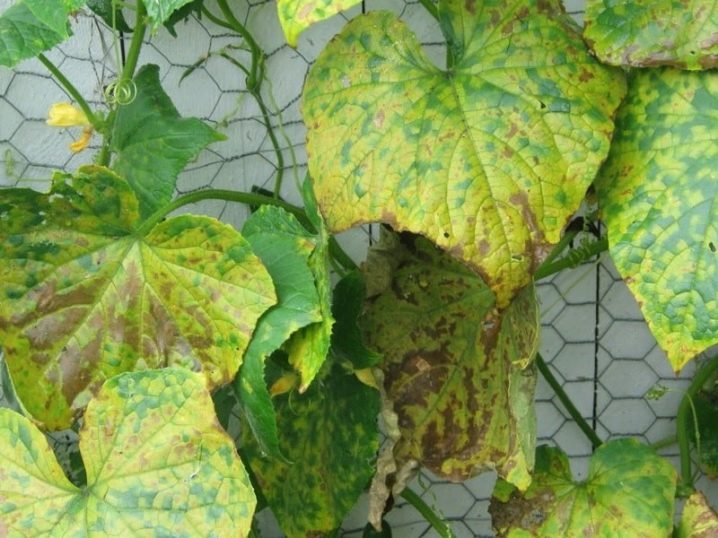
- Conifers. This disease can affect not only needles, but all aerial parts of the tree. The surface of branches, trunk and even cones becomes covered with spots, which eventually turn into bulky growths. In the spring, they start to crack. During this time, shallow wounds form on the surface of the tree. At the same time, the spores of the fungus spread through the air, infecting trees and other plants growing nearby.
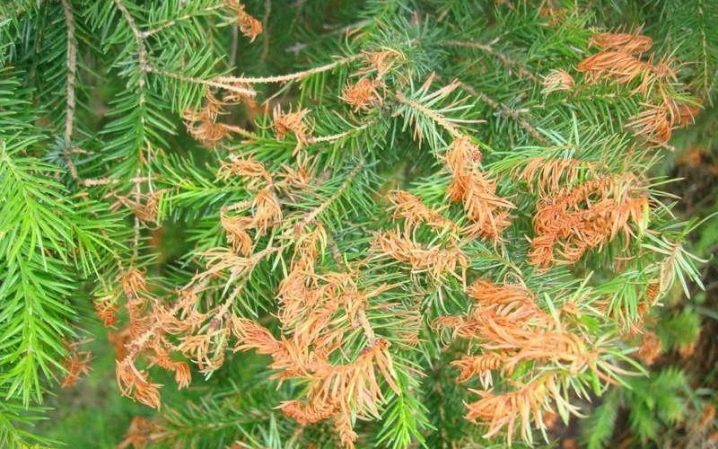
- Roses. Garden flowers suffer from fungal diseases quite often. Brown spots usually appear on the foliage. At first they can only be seen on the shoots. Then they appear on the foliage. By the fall, these spots darken.
If you do not start the fight in time, this disease will manifest itself with renewed vigor in the spring. In this case, it will be much more difficult to treat the plants.
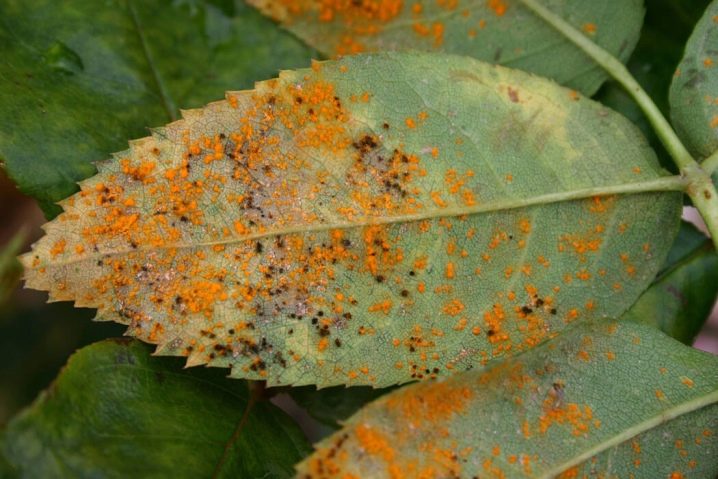
- Peonies. These plants develop rust in the summer. After flowering, yellow-gray spots appear on the surface of the foliage, which grow over time. Subsequently, they fill the entire lower part of the leaves. When this happens, the leaves begin to curl and dry out. The bush at this time looks really bad, and then dies altogether. At the same time, the spores of the fungus spread further.
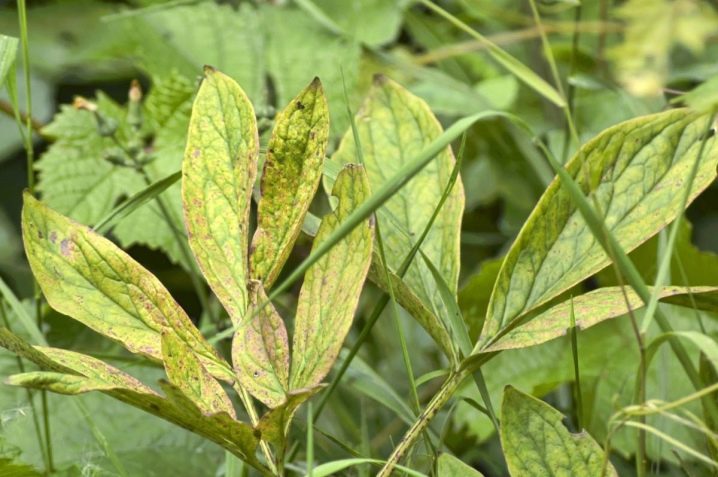
- Pears. The first signs of tree disease are yellow spots on the foliage. This usually happens in the middle of spring. In the future, rust spreads to shoots and fruits. The peak of the disease occurs in autumn. At this time, the formations become darker and more voluminous. In the same period, neighboring plants are infected.

- Apple trees. These fruit trees are also often rusty. Spots primarily appear on shoots and young foliage. Yellow dots form on the bottom. The top of the foliage is covered with rusty stripes or more raised formations. In places where spores accumulate, dark growths appear.
With a strong infection, young shoots of apple trees begin to dry out, and the bark begins to crack. The disease manifests itself in the same way on plums and cherries.
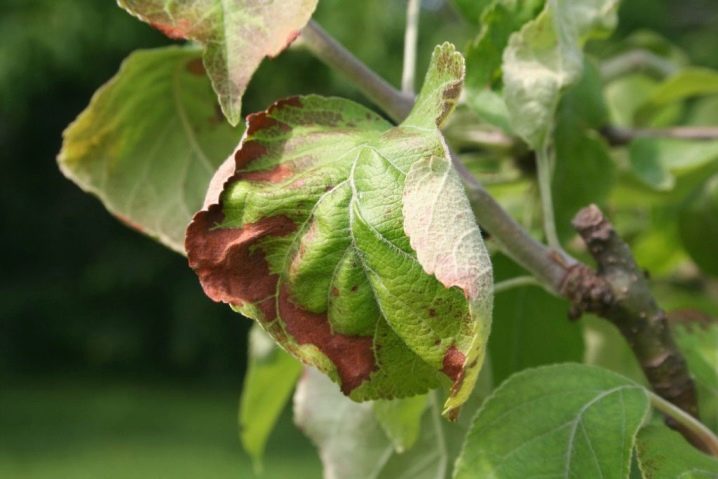
- Currant. On gooseberries, grapes and currants, rust spots appear at the very beginning of spring, during the opening of the leaves. From above, the foliage is covered with yellow-orange spots. In the future, the disease interferes with the formation of fruits on the bushes. If adult and fruiting plants are sick, the berries on them quickly shrivel and fall off.
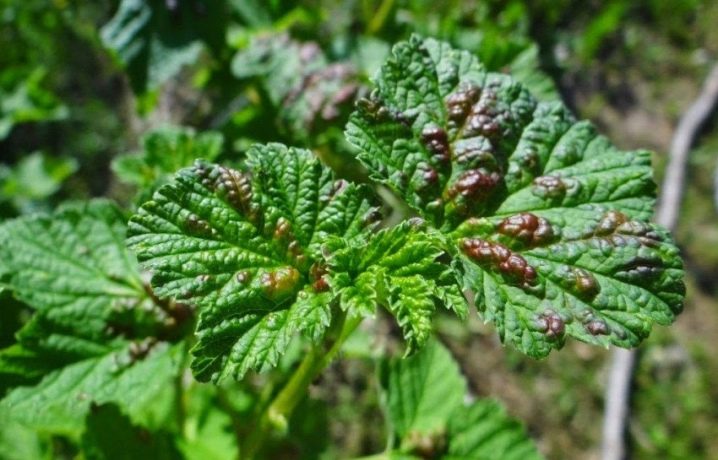
- Raspberries. Bushes are affected by rust in high humidity conditions. This usually happens in May. At this time, the foliage is covered with reddish-brown spots. Gray ulcers appear on the shoots. By autumn, they turn into a dense dark gray bloom.Rust-ailing bushes bear fruit very poorly and dry out quickly.
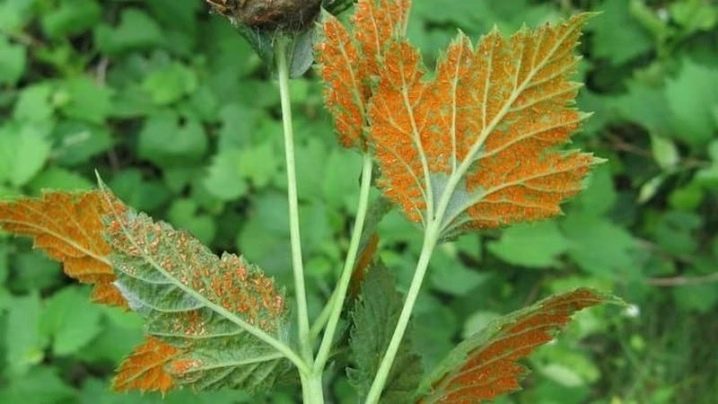
- Strawberry. It is very easy to notice the appearance of rust on strawberries. At this time, bright red-violet spots form on the foliage. Over time, they change their color and turn dark brown. In the future, the strawberry foliage dries up.
With a strong infection, the yield of the bushes decreases, and the taste of the berries deteriorates significantly.
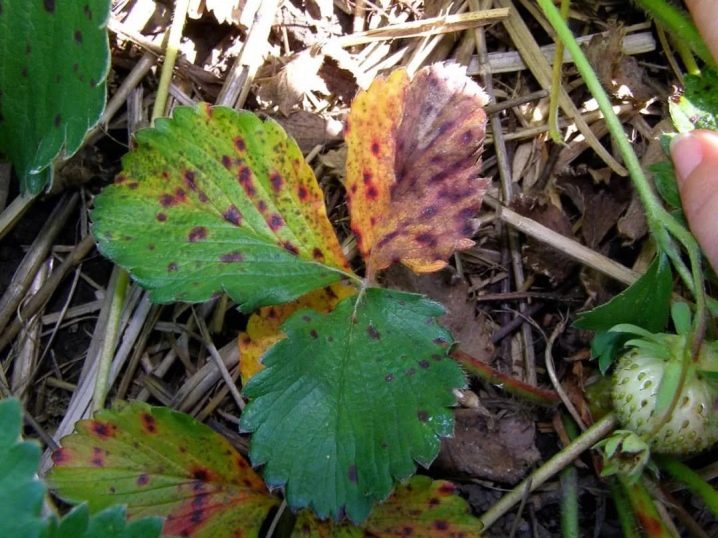
- Carrot. In carrots, rust affects the tops. Yellow-brown spots appear on it. They grow very quickly. The foliage and petioles of carrots turn brown and dry out at this time. Affected carrots grow very small and wrinkled.
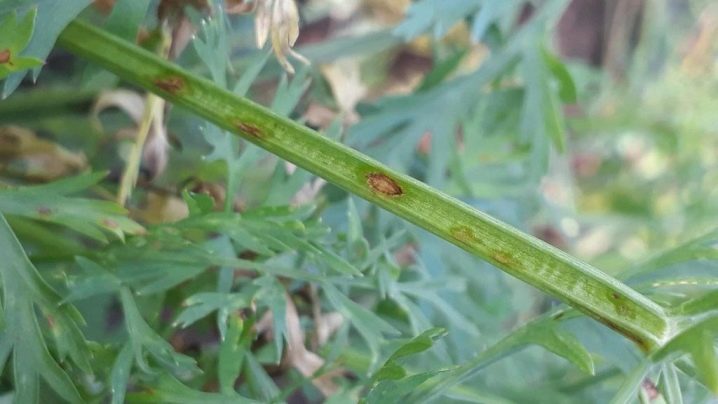
- Onion. Onions usually become infected in rainy weather. After a long rain, small brown-orange swells form on the surface of the feathers. They are arranged in groups. Gradually, these spore pads turn black.
The greens of ailing onions dry very quickly, and the heads that are underground become smaller.

- Garlic. This plant is affected by rust very often. At the initial stage, greens are covered with raised yellow spots. In the future, reddish tubercles form on them. Over time, they turn black.
If the infected plants are not removed from the area, the spores in these growths will quickly spread through the air, infecting their neighbors.

- Houseplants. Leaf and stem rust affects many indoor flowers. Light yellow spots appear on their surface. At this time, oval spore pads can be found on the lower part of the foliage.
If you do not start treating home flowers in time, they will quickly begin to fade and die.
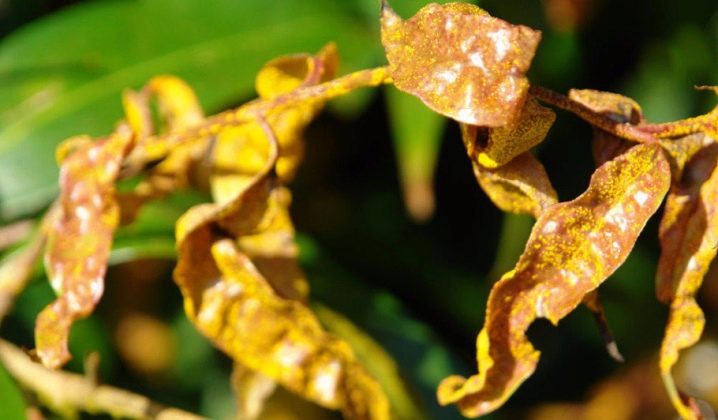
- Cereals. Rust affects all types of crops. But most often brown wheat suffers from it. Plants quickly become covered with small brown spots. The disease negatively affects the taste of products made from grains.
In general, rust is equally dangerous for all plants in the garden and vegetable garden. Therefore, this disease must be taken seriously.
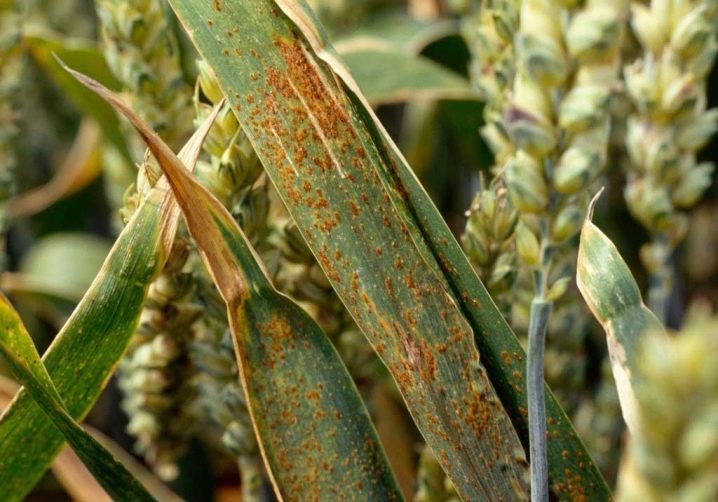
Reasons for the appearance
Like other fungal diseases, rust appears in places with high humidity. It develops most rapidly in hot and rainy summers. But there are other reasons for the appearance of this disease.
- Uncleaned territories. Fungal spores often remain on fallen leaves or broken branches. To avoid the spread of the disease, the site must be cleared of all plant debris. The remains of diseased plants must be burned or taken out of the site.
- Incorrect feeding. Both the lack of fertilizers and their excess can harm the plants.
- Lack of potassium. This element increases the resistance of plants to various diseases, including rust.
The main danger of this disease is that its pathogen can easily adapt to cold conditions. Therefore, even if it seems to a person that he has already defeated the disease, in the spring it can return to the site with renewed vigor.
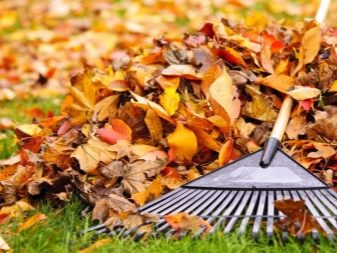
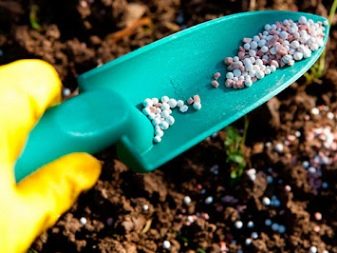
Treatment
To cure rust-infected plants, gardeners and gardeners use a variety of drugs.
Chemicals
Chemicals help to cope with the disease most quickly. It is worth paying attention to the following drugs.
- Bordeaux mixture. It is one of the most popular fungicides around. It is used not only in case of plant infection, but also for prophylaxis. Usually, the plants on the site are treated with Bordeaux mixture twice a year. In the spring, a 3% fungicide solution is used, in the fall, a 1% product is used.
- Abiga Peak. This preparation is suitable for the treatment of both garden plants and flowers. It contains copper. Therefore, it acts on the same principle as the Bordeaux liquid. It is customary to spray infected plants several times. Processing is carried out at intervals of two weeks.
- "Topaz". This fast-acting drug allows you to quickly cope with the disease. You need to use it following the instructions. The dosage of the product for rust control on different plants is different. Topaz cannot be combined with other chemical products.
- Strobe. This remedy is also used both to combat the disease and to prevent it. The product can be alternated with other fungicides. It is recommended to use it for processing plants on your site no more than three times per season.
- Fitosporin. It is a quality biological fungicide that can be used at all stages of plant development. The drug is used both in the greenhouse and in the open field.
- "HOM". This drug is considered one of the best. It does not harm people, but it helps to quickly cope with the fungus. The product can be used in conjunction with other rust removers.
All chemicals must be used according to the instructions, not forgetting about personal protective equipment. Do not process plants if there are animals or small children nearby.
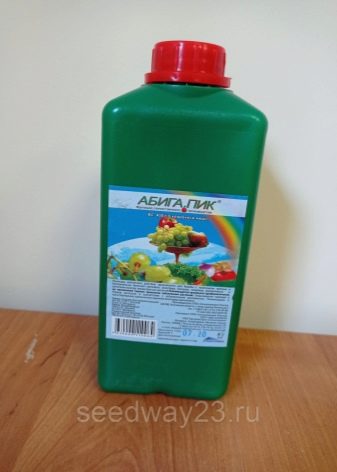
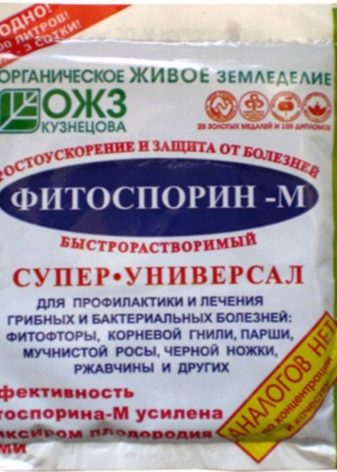
Folk recipes
Folk remedies are often used to combat rust. As a rule, gardeners and gardeners choose the following products for work.
- Serum. This product is diluted with water in a ratio of 1 to 10. You can treat bushes, trees or flowers with this preparation immediately after its preparation. The product not only helps to fight fungal disease, but also serves as an excellent plant nutrition. Therefore, treatment helps to make plants healthier and more resistant to other diseases.
- Manure. Rotted mullein is used for processing plants. It is combined with water in a ratio of 1 to 3. Then the product is infused in water for three days. After that, the product is used to spray the bushes. This is usually done in the evening.
- Soda. This product is safe for plants. Preparing a soda-based solution is very simple. To do this, mix a tablespoon of baking soda with a teaspoon of liquid soap or dishwashing detergent. These components are interconnected and poured with five liters of water. Next, add a tablespoon of sunflower oil and an aspirin tablet to the container. The contents are mixed again, and then used to spray the plants. The site is treated with a similar solution several times. The break between procedures is 10 days.
- Herbal infusion. To prepare this product, green weeds are crushed and placed in a container. Next, the greens are poured with hot water. The contents of the barrel are infused for several days, stirring occasionally. Next, the product is filtered through cheesecloth and used to treat plants on a leaf.
All these tools help to cope with the disease in the early stages of plant infection. They can also be used for preventive treatment of the site, since they do not harm the plants at all.
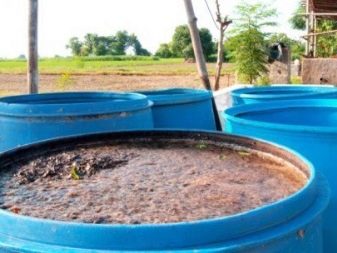
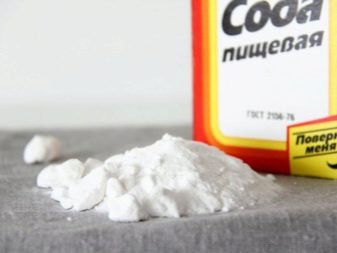
Preventive measures
Preventing rust is much easier than curing sick plants. Therefore, gardeners and gardeners are advised to take measures to prevent it.
- Choose varieties that are resistant to fungal diseases for planting. Nowadays, you can find such varieties of trees, bushes and other plants in many stores.
- Plant in areas that are sunny and sheltered from cold winds. All of them should be located at a sufficiently large distance from each other. After all, plants in thickened plantings get sick much more often.
- Waterlogging of the earth must not be allowed. If the summer is rainy, the plants are not watered.
- Pest control is important during the warmer months. After all, insects may well become distributors of fungal spores. Most often, the disease is spread by the common aphid. Therefore, it should not be allowed to appear on the site.
- Feed crops competently. Nitrogen fertilizers are usually only used in spring and early summer.The rest of the time, the plants are fed with foods high in potassium and phosphorus.
- In early spring, plants are recommended to be treated with fungicides. Trees at this time are whitewashed with slaked lime. A small amount of copper sulfate is usually added to it. Such treatment helps to protect plants not only from rust, but also from other common diseases.
- For planting on your site, you should choose healthy planting material. Seedlings and seedlings should be bought in trusted stores or nurseries. When pruning and replanting plants, use disinfected tools. They can be processed with a weak solution of potassium permanganate.
- In the fall, the site must be carefully cleaned. All plant residues must be destroyed. It is advisable to dig up the site after harvesting. This helps kill fungal spores that may hibernate underground.
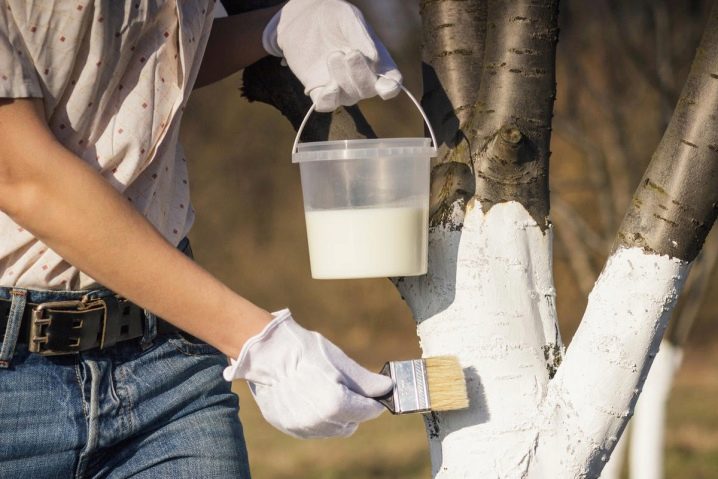
In general, dealing with rust is not as difficult as it seems at first glance. The main thing is not to start this disease and use the correct methods of treatment.













The comment was sent successfully.